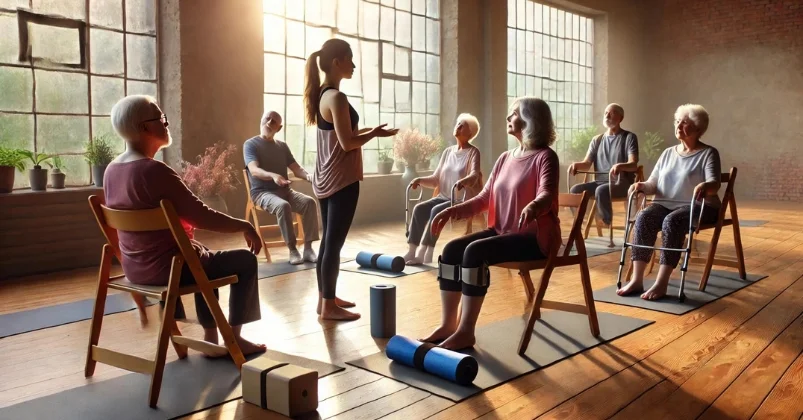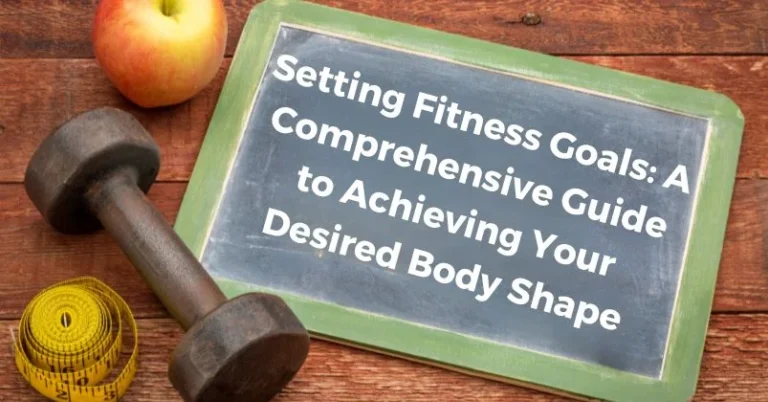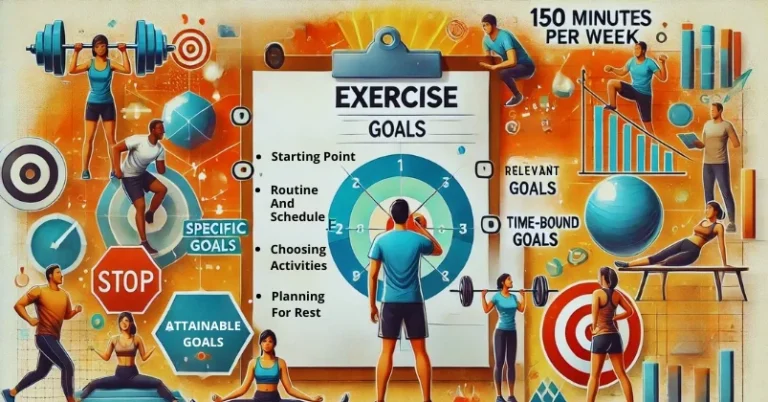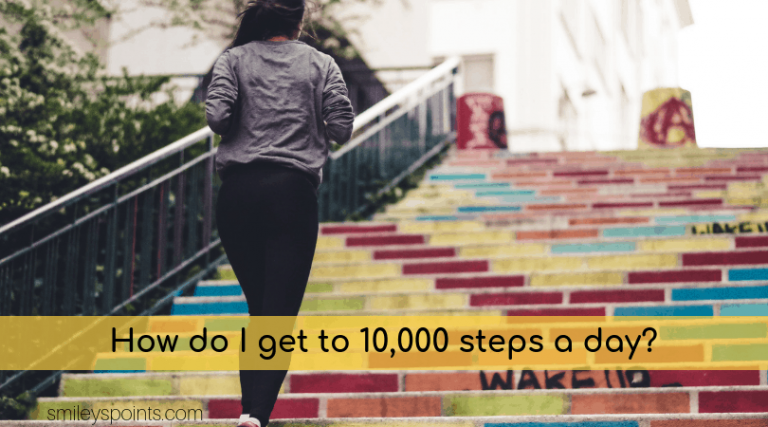Adaptive Yoga for Arthritis: A Comprehensive Guide
Adaptive yoga is a type of yoga that is designed to help people with physical limitations, such as arthritis, to practice yoga safely and comfortably. Arthritis is a condition that affects millions of people worldwide, causing pain, stiffness, and inflammation in the joints. While there is no cure for arthritis, many treatments available can help manage the symptoms, including adaptive yoga.
The science behind yoga and arthritis is still being studied, but research has shown that yoga can help reduce pain, increase flexibility, and improve the overall quality of life for people with arthritis. Adaptive yoga is particularly beneficial for people with arthritis because it can be tailored to their individual needs and abilities. This means that people with arthritis can practice yoga safely and without exacerbating their symptoms.
Key Takeaways
- Adaptive yoga is a type of yoga designed to help people with physical limitations, such as arthritis.
- Research has shown that yoga can help reduce pain, increase flexibility, and improve overall quality of life for people with arthritis.
- Adaptive yoga is particularly beneficial for people with arthritis because it can be tailored to their individual needs and abilities.
Understanding Arthritis
Arthritis is a joint disease that causes inflammation and pain. It can affect people of all ages, genders, and races. There are over 100 different types of arthritis, but the two most common types are rheumatoid arthritis and osteoarthritis.
Types of Arthritis
Rheumatoid arthritis is an autoimmune disease that causes the body's immune system to attack the joints. This can lead to joint damage, pain, and stiffness. Osteoarthritis, on the other hand, is a degenerative joint disease that occurs when the cartilage that cushions the joints wears down over time. This can cause pain, stiffness, and swelling in the affected joint.
Symptoms of Arthritis
The symptoms of arthritis can vary depending on the type of arthritis and the severity of the disease. Common symptoms of arthritis include joint pain, stiffness, and swelling. People with arthritis may also experience fatigue, fever, and weight loss. In some cases, arthritis can affect the skin, eyes, and other organs in the body.
Arthritis Community
Living with arthritis can be challenging, but there is a supportive community of people who understand what you are going through. Joining an arthritis support group can help you connect with others who are dealing with similar challenges. These groups can provide emotional support, practical advice, and a sense of community.
In conclusion, understanding arthritis is important for anyone who wants to live a healthy and active life. By knowing the types of arthritis, symptoms, and the importance of the arthritis community, you can take steps to manage your arthritis and improve your quality of life.
The Science Behind Yoga and Arthritis
Yoga is a form of exercise that has been shown to have numerous benefits for people with arthritis. Research has shown that practicing yoga regularly can reduce pain, increase flexibility, improve function, and lower stress in people with arthritis.
Research Findings
Yoga can be a powerful tool in preventing arthritis by promoting joint health, reducing inflammation, and improving balance, coordination, and mobility. Regular practice of yoga postures can increase flexibility and strength around the joints, helping to prevent wear and tear over time. In addition, yoga comes with the benefits of physical exercise including stretching, strengthening, and balance, and the associated safety component in the ability to adjust pace and intensity.
Existing biomedical research on the efficacy of yoga for arthritis is promising and shows some evidence of reduced pain, sleep disturbance, and depression. A study published in the Journal of Rheumatology found that practicing yoga for eight weeks reduced pain and improved physical function in people with knee osteoarthritis. Another study published in the Journal of Alternative and Complementary Medicine found that practicing yoga for six weeks reduced pain and stiffness in people with rheumatoid arthritis.
Johns Hopkins Arthritis Center Studies
Johns Hopkins Arthritis Center designed and conducted a large, randomized, controlled trial of how yoga can help sedentary adults with arthritis. The study found that yoga significantly improved physical function, reduced pain, and lowered levels of depression in people with knee osteoarthritis. The study also found that yoga improved balance and flexibility in people with rheumatoid arthritis.
In addition, the Johns Hopkins Arthritis Center has created a video series of adaptive yoga for arthritis, which includes poses that can be done seated in a chair or on the floor. These poses are designed to help people with arthritis improve their flexibility, strength, and balance, while also reducing pain and stress.
Overall, the science behind yoga and arthritis is promising, and practicing yoga regularly can have numerous benefits for people with arthritis.
Benefits of Adaptive Yoga for Arthritis
Adaptive yoga is a type of yoga that is modified to suit the needs of people with physical limitations or disabilities. It is a gentle form of yoga that can be practiced by people of all ages and abilities. For people with arthritis, adaptive yoga can offer a range of physical and mental health benefits.
Physical Benefits
Adaptive yoga can help people with arthritis improve their physical health in several ways. It can help increase mobility, strength, flexibility, and balance. It can also help improve range of motion and alignment. These benefits can help people with arthritis perform daily activities with greater ease and comfort.
Adaptive yoga can also help reduce stiffness and pain in the joints. It can help reduce inflammation and improve muscle strength. These benefits can help people with arthritis manage their symptoms and improve their quality of life.
Mental Health Benefits
Adaptive yoga can also offer a range of mental health benefits for people with arthritis. It can help reduce stress and promote relaxation. It can also help improve energy levels and overall well-being.
Yoga, in general, is effective in reducing depressive symptoms and promoting better mental health. These benefits can be particularly important for people with arthritis, who may experience higher levels of stress and anxiety due to their condition.
Overall, adaptive yoga can be a useful tool for people with arthritis who are looking to improve their physical and mental health. It is a gentle form of exercise that can be tailored to suit individual needs and abilities. With regular practice, it can help people with arthritis manage their symptoms and improve their quality of life.
Different Yoga Poses for Arthritis
Adaptive yoga is a gentle form of yoga that can be practiced by people with arthritis. It is designed to be safe and effective, with modifications made to traditional yoga postures to accommodate the needs of those with arthritis. Here are some different yoga poses for arthritis that can be practiced while sitting, standing, or on the floor.
Seated Spinal Twist
The Seated Spinal Twist is a yoga posture that can help to alleviate back pain and improve spinal mobility. To perform this pose, sit upright in a chair with your feet flat on the floor and your hands on your knees. Inhale and lengthen your spine, then exhale and twist to the right, placing your left hand on the outside of your right knee and your right hand on the back of your chair. Hold for a few breaths, then repeat on the other side.
Chair Pose
The Chair Pose is a yoga posture that can help to strengthen the legs and improve balance. To perform this pose, stand with your feet hip-width apart and your arms at your sides. Inhale and raise your arms overhead, then exhale and bend your knees, as if you were sitting back into a chair. Hold for a few breaths, then straighten your legs to return to a standing position.
Warrior Pose
The Warrior Pose is a yoga posture that can help to strengthen the legs and improve balance. To perform this pose, stand with your feet apart and your arms at your sides. Inhale and raise your arms overhead, then exhale and turn your left foot out to the side. Bend your left knee and extend your right leg behind you, keeping your right foot flat on the floor. Hold for a few breaths, then repeat on the other side.
Mountain Pose
The Mountain Pose is a yoga posture that can help to improve posture and alignment. To perform this pose, stand with your feet hip-width apart and your arms at your sides. Inhale and lengthen your spine, then exhale and ground your feet into the floor. Engage your core muscles and lift the top of your head towards the ceiling, keeping your shoulders relaxed. Hold for a few breaths.
Adaptive yoga is a great way to stay active and improve mobility for those with arthritis. Incorporating these yoga postures into your daily routine can help to alleviate pain and improve overall well-being. Remember to always listen to your body and modify the poses as needed.
Practicing Adaptive Yoga
Adaptive yoga is a style of yoga that can be modified to accommodate people of all ages, abilities, and function levels. It is particularly beneficial for individuals with arthritis. In this section, we will discuss how to get started with adaptive yoga, finding the right yoga instructor, modifications to traditional poses, and yoga styles that are ideal for people with arthritis.
Getting Started
Before starting an exercise regimen, it is essential to consult with a healthcare professional to determine if it is safe to do so. After obtaining clearance, it is time to find a suitable yoga instructor. It is crucial to find an instructor who is knowledgeable about adaptive yoga and has experience working with individuals with arthritis.
Yoga Instructors
When looking for a yoga instructor, it is essential to find someone who is certified and experienced in teaching yoga to individuals with arthritis. Yoga instructors with additional training in adaptive yoga, such as yoga therapy, can be particularly helpful. It is also important to find an instructor who is patient and compassionate and can provide modifications to traditional poses to accommodate individual needs.
Modifications to Traditional Poses
Modifications to traditional yoga poses can make them more accessible for individuals with arthritis. For example, using blankets or blocks to modify a standing position can reduce the amount of weight-bearing on the joints. Additionally, modifications can be made to accommodate a limited range of motion or flexibility.
Yoga Styles for Arthritis
Several yoga styles are particularly beneficial for individuals with arthritis. Iyengar yoga, for example, emphasizes proper alignment and uses props to help modify poses. Hatha yoga is a gentle form of yoga that focuses on breathing and relaxation. Ashtanga yoga is a more vigorous form of yoga that can be modified to accommodate individual needs. Bikram yoga, also known as hot yoga, is not recommended for individuals with arthritis due to the high temperatures and intensity. Power yoga is a more athletic form of yoga that may not be suitable for all individuals with arthritis. Viniyoga is a gentle form of yoga that focuses on individual needs and can be easily modified.
In conclusion, practicing adaptive yoga can be an excellent way for individuals with arthritis to stay active and improve their overall well-being. Finding the right yoga instructor, making modifications to traditional poses, and choosing the appropriate yoga style are all essential components of a successful adaptive yoga practice.
Breathing Techniques in Adaptive Yoga
Breathing techniques, also known as Pranayama, are an essential part of any yoga practice, including adaptive yoga for arthritis. Pranayama focuses on the control and regulation of breath to help calm the mind and body, reduce stress, and improve overall well-being.
In adaptive yoga for arthritis, breathing techniques are particularly important as they help to reduce pain and inflammation and improve joint mobility. These techniques can be modified to suit the needs of each individual, making them accessible to people of all abilities.
One of the most common breathing techniques used in adaptive yoga for arthritis is the “Three-Part Breath.” This technique involves inhaling deeply into the belly, then the ribcage, and finally the chest, and exhaling in reverse order. This technique helps to increase lung capacity, improve oxygenation, and reduce stress and anxiety.
Another useful breathing technique for people with arthritis is the “Equal Breathing” technique. This involves inhaling and exhaling for an equal length of time, typically four counts each. This technique helps to calm the mind, reduce stress and anxiety, and improve focus and concentration.
In addition to these techniques, many other breathing exercises can be incorporated into an adaptive yoga practice for arthritis. These include:
- Ujjayi Breathing: Also known as “Victorious Breath,” this technique involves breathing in and out through the nose while constricting the back of the throat. This creates a gentle hissing sound and helps to calm the mind and body.
- Kapalabhati Breathing: Also known as “Skull Shining Breath,” this technique involves rapid, forceful exhales followed by passive inhales. This technique helps to clear the sinuses, improve lung function, and energize the body.
- Alternate Nostril Breathing: This technique involves closing one nostril with the thumb and inhaling through the other, then closing the other nostril with the ring finger and exhaling through the first. This technique helps to balance the body and mind and improve overall well-being.
In conclusion, breathing techniques are an essential part of any adaptive yoga practice for arthritis. These techniques can be modified to suit the needs of each individual and can help to reduce pain and inflammation, improve joint mobility, and promote overall well-being.
Lifestyle Changes and Arthritis
People with arthritis can benefit from making certain lifestyle changes that can help manage their condition and improve their quality of life. Here are some key areas where lifestyle changes can be helpful.
Diet
A healthy diet can help reduce inflammation and improve overall health. People with arthritis should aim to eat a balanced diet that includes plenty of fruits, vegetables, whole grains, and lean protein. They should also try to limit their intake of processed foods, saturated fats, and sugar. Some specific foods that may be particularly helpful for people with arthritis include:
- Omega-3 fatty acids: Found in fatty fish like salmon, as well as in flaxseeds and walnuts, omega-3s have anti-inflammatory properties that can help reduce joint pain and swelling.
- Vitamin C: Found in citrus fruits, bell peppers, and strawberries, vitamin C can help protect cartilage and reduce inflammation.
- Turmeric: This spice contains a compound called curcumin that has anti-inflammatory properties. It can be added to food or taken as a supplement.
Exercise Regimen
Exercise is an important part of managing arthritis. Regular physical activity can help reduce joint pain and stiffness, improve flexibility and range of motion, and strengthen muscles. People with arthritis should aim to get at least 150 minutes of moderate-intensity exercise per week. Some good options include:
- Walking
- Swimming
- Cycling
- Yoga
It's important to choose exercises that are low-impact and won't put too much stress on the joints. It's also important to start slowly and gradually increase the intensity and duration of exercise over time.
Stress Management
Stress can exacerbate arthritis symptoms, so it's important to find ways to manage stress and relax. Some good options include:
- Meditation
- Deep breathing
- Progressive muscle relaxation
- Tai chi
- Yoga
These practices can help reduce anxiety, improve sleep, and boost mood. It's important to find a stress management technique that works for you and make it a regular part of your routine.
By making these lifestyle changes, people with arthritis can improve their well-being, reduce pain and swelling, and manage their symptoms more effectively.
Online Resources for Adaptive Yoga
Adaptive yoga is a style of yoga that considers all bodies and abilities. It's accessible to everyone, including those with arthritis. If you're interested in practicing adaptive yoga for arthritis, there are several online resources available.
Dr. Steffany Moonaz's Resources
Dr. Steffany Moonaz is a yoga therapist and researcher who specializes in using yoga to help people with arthritis. She has developed a series of videos called Yoga for Arthritis, which can be used one at a time or in sequence, depending on how much time you have and what you want to practice. These videos include information on posture, breathing, movement, yoga poses that are done seated and standing, and relaxation. You can find these videos on the Johns Hopkins Arthritis Center website.
Dr. Moonaz has also written a book called “Yoga Therapy for Arthritis: A Whole-Person Approach to Movement and Lifestyle,” which provides a comprehensive guide to using yoga to manage arthritis symptoms. The book includes information on the science of arthritis and yoga, as well as specific yoga practices for people with arthritis.
YouTube Channels
Several YouTube channels offer adaptive yoga classes for people with arthritis. One such channel is Yoga with Adriene. Adriene has a series of videos called “Yoga for Healing,” which includes classes specifically designed for people with arthritis. These videos are gentle and easy to follow, making them great for beginners.
Another YouTube channel to check out is Yoga for Arthritis. This channel is run by a yoga therapist who specializes in working with people with arthritis. The videos on this channel are designed to be accessible to people of all abilities and include both seated and standing poses.
In addition to these channels, many other yoga teachers offer adaptive yoga classes on YouTube. When searching for adaptive yoga videos, be sure to look for classes that are specifically designed for people with arthritis.
Overall, there are many online resources available for people who are interested in practicing adaptive yoga for arthritis. Whether you prefer to follow along with videos or read a book, there are resources available to help you get started. Remember to always listen to your body and modify poses as needed to avoid discomfort or pain.
FAQs
Gentle yoga styles such as Hatha, Restorative, and Yin are recommended for those with joint stiffness. These styles focus on slow movements and holding poses for extended periods to increase flexibility and range of motion.
Yes, yoga can help alleviate arthritis symptoms such as joint pain, stiffness, and inflammation. The gentle movements in yoga can improve flexibility and joint function, while also promoting relaxation and stress relief.
Some beginner-friendly yoga poses for arthritis include Mountain Pose, Forward Fold, Cat-Cow, Child's Pose, and Modified Cobra. These poses focus on gentle stretching and can help improve joint mobility.
Yes, there are specific modifications that can be made for yoga with arthritis. Props such as blocks, straps, and blankets can be used to support the body and reduce strain on the joints. Additionally, modifications can be made to poses to make them more accessible and comfortable for those with arthritis.
Adaptive yoga is designed to accommodate individuals with physical limitations, such as arthritis. This type of yoga focuses on modifications and variations of poses to make them more accessible and comfortable for those with joint pain and stiffness. Adaptive yoga can help improve joint mobility, reduce pain, and promote relaxation and stress relief.
Some tips for practicing yoga with arthritis include listening to your body and avoiding any poses that cause pain or discomfort. It's important to work with a qualified yoga instructor who can provide modifications and adjustments to make poses more accessible. Additionally, it's important to warm up before practicing yoga and to take breaks as needed throughout the practice.








